
Ambrogio Traversari, also referred to as Ambrose of Camaldoli, was an Italian monk and theologian who was a prime supporter of the papal cause in the 15th century. He is honored as a saint by the Camaldolese Order.
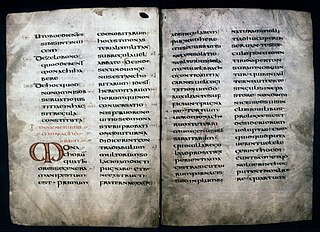
The Rule of Saint Benedict is a book of precepts written in Latin c. 530 by St. Benedict of Nursia for monks living communally under the authority of an abbot.
A religious order is a subgroup within a larger confessional community with a distinctive high-religiosity lifestyle and clear membership. Religious orders often trace their lineage from revered teachers, venerate their founders, and have a document describing their lifestyle called a rule of life. Such orders exist in many of the world's religions.

Lorenzo Monaco was an Italian painter and miniaturist of the late Gothic to early Renaissance age. He was born Piero di Giovanni. Little is known about his youth, apart from the fact that he was apprenticed in Florence. He has been considered the last important exponent of the Giotto style, before the Renaissance revolution that came with Fra Angelico and Masaccio.
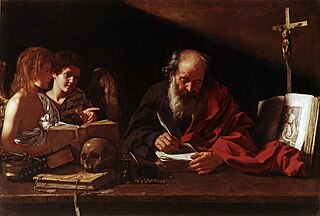
A hermit, also known as an eremite or solitary, is a person who lives in seclusion. Eremitism plays a role in a variety of religions.
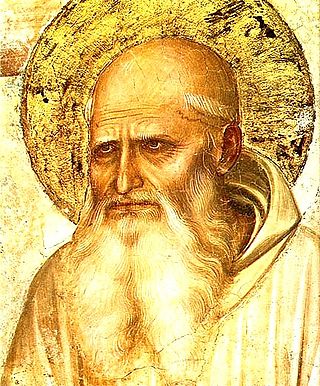
Romuald was the founder of the Camaldolese order and a major figure in the eleventh-century "Renaissance of eremitical asceticism". Romuald spent about 30 years traversing Italy, founding and reforming monasteries and hermitages.
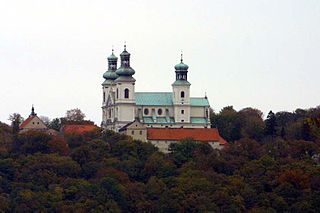
The Camaldolese Hermits of Mount Corona, commonly called Camaldolese, is a monastic order of Pontifical Right for men founded by Saint Romuald. Its name is derived from the Holy Hermitage of Camaldoli, high in the mountains of central Italy, near the city of Arezzo. Its members add the nominal letters E.C.M.C. after their names to indicate their membership in the congregation. Apart from the Roman Catholic monasteries, in recent times ecumenical Christian hermitages with a Camaldolese spirituality have arisen as well.

Grandmontines were the monks of the Order of Grandmont, a religious order founded by Saint Stephen of Thiers, towards the end of the 11th century. The order was named after its motherhouse, Grandmont Abbey in the eponymous village, now part of the commune of Saint-Sylvestre, in the department of Haute-Vienne, in Limousin, France. They were also known as the Boni Homines or Bonshommes.
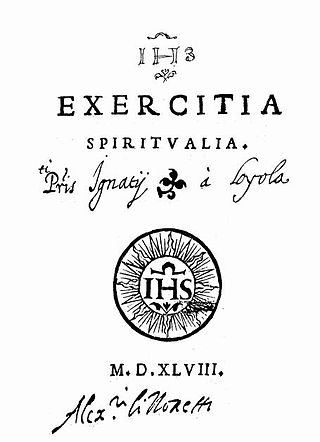
The Spiritual Exercises, composed 1522–1524, are a set of Christian meditations, contemplations, and prayers written by Ignatius of Loyola, a 16th-century Spanish Catholic priest, theologian, and founder of the Society of Jesus (Jesuits).

Consecrated life is a state of life in the Catholic Church lived by those faithful who are called to follow Jesus Christ in a more exacting way. It includes those in institutes of consecrated life, societies of apostolic life, as well as those living as hermits or consecrated virgins.
Spiritual direction is the practice of being with people as they attempt to deepen their relationship with the divine, or to learn and grow in their personal spirituality. The person seeking direction shares stories of their encounters of the divine, or how they are cultivating a life attuned to spiritual things. The director listens and asks questions to assist the directee in his or her process of reflection and spiritual growth. Advocates of Spiritual direction claim that it develops a deeper awareness with the spiritual aspect of being human, and that it is neither psychotherapy nor counseling nor financial planning.
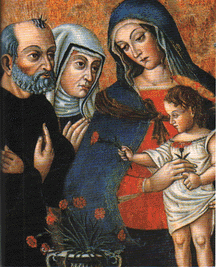
Simon of Cascia was an ascetic and preacher from Cascia, Italy. In his early days, he was influenced by the Spiritual Franciscan Angelo Clareno da Cingoli. He is commemorated on February 16.
Prior is an ecclesiastical title for a superior in some religious orders. The word is derived from the Latin for "earlier" or "first". Its earlier generic usage referred to any monastic superior. In abbeys, a prior would be lower in rank than the abbey's abbot or abbess.

Pietro I Orseolo OSBCam, also known as Peter Urseulus, (928–987) was the Doge of Venice from 976 until 978. He abdicated his office and left in the middle of the night to become a monk. He later entered the order of the Camaldolese Hermits of Mount Corona. He is venerated as a saint in the Eastern Orthodox Church and Roman Catholic Church.
Gian Benedetto Mittarelli, was an Italian abbot and monastic historian in the Camaldolese Order.
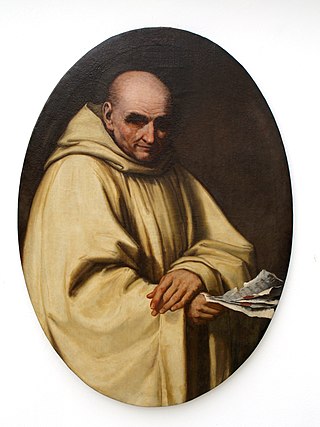
Pietro Delfino or Delfin, O.S.B. Cam., was an Italian Camaldolese monk, patristic scholar, theologian, abbot, and Superior General of his religious Order.
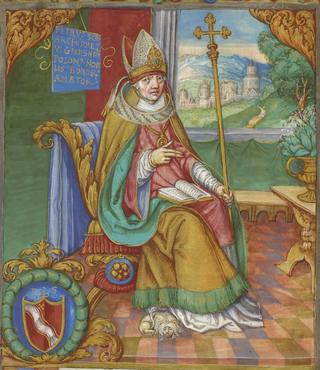
Bogumilus, in Polish Bogumił Piotr, was Archbishop of Gniezno and a hermit.
Nazarena of Jesus, O.S.B. Cam., was an American Roman Catholic Camaldolese nun, who spent most of her adult life in a monastery as an anchoress or recluse.

Giacinto Bonaventura Longhin - in religious Andrea di Campodarsego - was an Italian Roman Catholic prelate and professed member from the Order of Friars Minor Capuchin who served as the Bishop of Treviso from 1904 until his death. Longhin held various roles of leadership within his order following his ordination such as acting as a teacher in Udine and acting as the Provincial Minister for his order. He became close friends with Giuseppe Melchiorre Sarto, Cardinal Patriarch of Venice. The latter became Pope Pius X in 1903 who made his old friend Longhin the new head for the vacant Treviso episcopal see.
Luigi Tezza was an Italian Roman Catholic priest and a professed member of the Camillians. He established the Daughters of St. Camillus and is known as the Apostle of Lima. He was ordained in 1864 and went on to serve the sick and the poor in Peru where he administered. Tezza's new religious congregation was established with the sole aim of sick relief who followed the example of the Camillian order as a branch of it.














